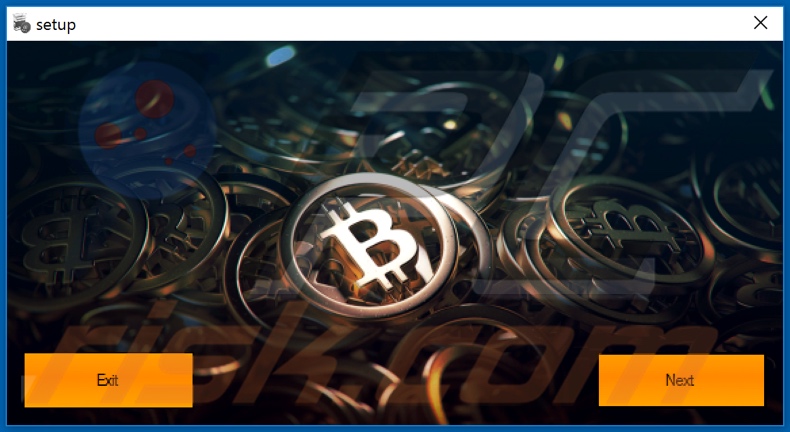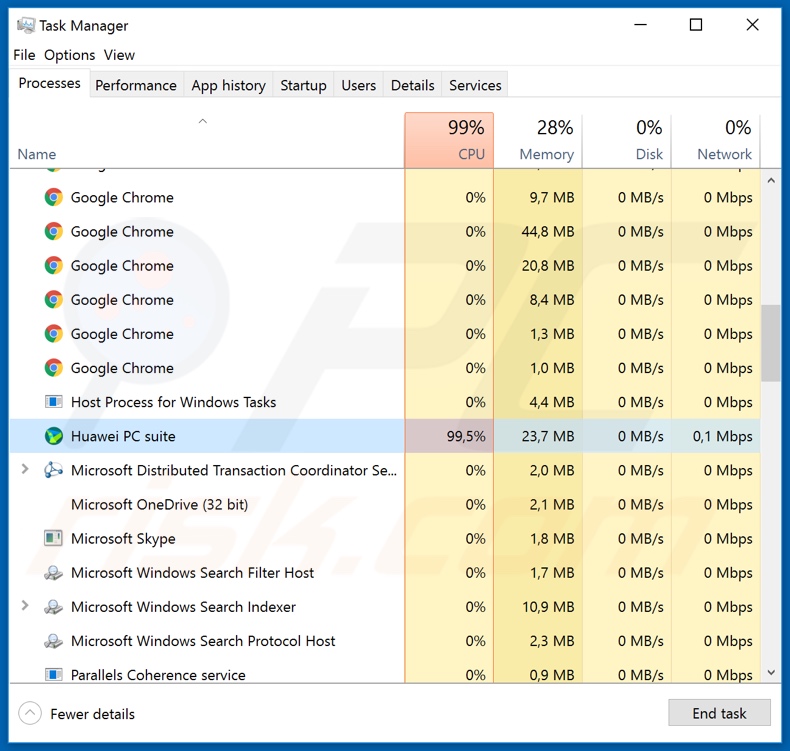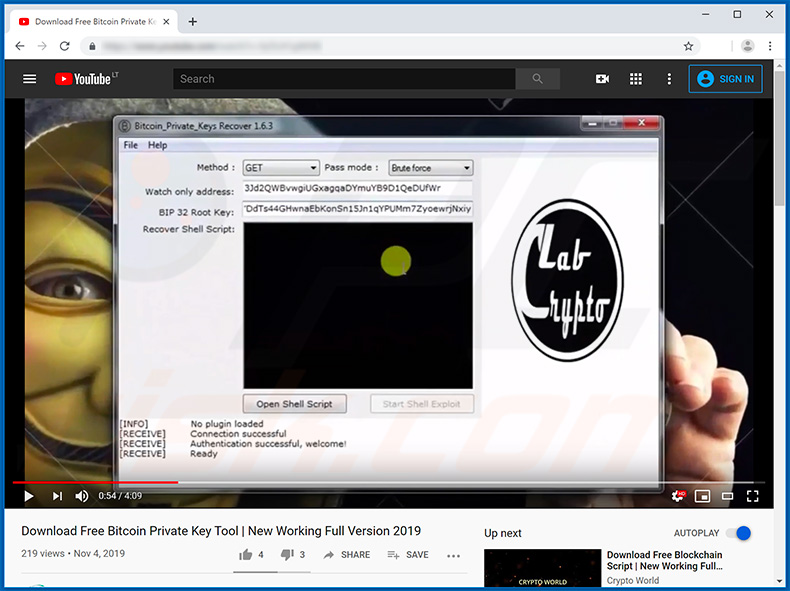Avoiding downloading trojans via the Free Bitcoin Private Key Tool scam
TrojanAlso Known As: Free Bitcoin Private Key Tool trojan
Get free scan and check if your device is infected.
Remove it nowTo use full-featured product, you have to purchase a license for Combo Cleaner. Seven days free trial available. Combo Cleaner is owned and operated by RCS LT, the parent company of PCRisk.com.
What is Free Bitcoin Private Key Tool?
Discovered by Frost, "Free Bitcoin Private Key Tool" is a scam application used to proliferate Predator the Thief trojan-type malware.
It is promoted as a tool that supposedly grants users access to Bitcoin cryptocurrency stored in a Bitcoin wallet address. It allegedly does so by generating a private key to the Bitcoin address, thereby allowing entry and full control over it. Instead of producing easy profit, however, this scam infects systems with a high-risk, information-stealing trojan.

"Free Bitcoin Private Key Tool" is mostly promoted through Youtube videos. These videos advertise the fake tool as a quick and easy way to make a fortune. The descriptions usually contain download links to the "tool" from Yandex Disk, MediaFire, or Google Drive storage services.
The downloaded archive file is named "Crypto World.zip". After extraction (i.e., after the file is "unzipped"/uncompressed), the folder contains an executable called "setup.exe". Executing this file will initiate a chain of actions leading to the infection. For example, "setup.exe" will "unzip" "license.exe" in the "\language\templates\temp" folder.
Following this, "license.exe" is automatically executed and installs the Predator the Thief trojan. This malicious software can cause a chain infection, as well as collect and send data to cyber criminals responsible for the scam. Predator the Thief operates by obtaining information from various applications and gathering selected files.
It targets browsers in to acquire data such as cookies, saved logins/passwords, and other vulnerable details. Steam, Discord, FileZilla, and WinFTP are a few examples of apps under threat of infiltration, from which this trojan attempts to steal account credentials and log-in information.
The integrity of cryptocurrency wallets is also endangered. Furthermore, the malware collects system data (CPU, GPU, operating system, username, etc.) and certain files (e.g. .doc, .docx, .txt and .log, etc.) from the Desktop, Downloads, and Documents folders.
Essentially, the main purpose of Predator the Thief is to gain access to a variety of users' accounts and generate as much revenue as possible. There are many ways it can achieve this. For example, by hijacking the victim's banking accounts, cryptowallets and similar, it can make financial transfers or online purchases.
Through communication services (emails, chats, etc.) and social networking accounts, users' contacts can be asked to loan money or be similarly infected. In summary, malicious programs such as Predator the Thief can cause system infiltration and infections, and lead to severe privacy issues, significant financial loss, and even identity theft.
Most trojan-type software processes are disguised in Windows Task Manager. In the case of "Free Bitcoin Private Key Tool", the process emulates the Huawei PC suite (a legitimate application).
Note that this is merely a deception and Huawei is not connected to the infection. Should a suspicious process be noticed, terminate it immediately. You are then strongly advised to scan the system with reputable anti-virus/anti-spyware software and eliminate all detected threats without delay.
| Name | Free Bitcoin Private Key Tool trojan |
| Threat Type | Trojan, password-stealing virus, banking malware, spyware. |
| Detection Names | BitDefenderTheta (Gen:NN.ZemsilCO8.32248.Qm2@aavp4Cc), Webroot (W32.Malware.Gen), Full List (VirusTotal) |
| Malicious Process Name(s) | Huawei PC suite |
| Payload | Predator the Thief |
| Symptoms | Trojans are designed to stealthily infiltrate the victim's computer and remain silent, and thus no particular symptoms are clearly visible on an infected machine. |
| Distribution methods | Infected email attachments, malicious online advertisements, social engineering, software 'cracks'. |
| Damage | Stolen passwords and banking information, identity theft, the victim's computer added to a botnet. |
| Malware Removal (Windows) |
To eliminate possible malware infections, scan your computer with legitimate antivirus software. Our security researchers recommend using Combo Cleaner. Download Combo CleanerTo use full-featured product, you have to purchase a license for Combo Cleaner. 7 days free trial available. Combo Cleaner is owned and operated by RCS LT, the parent company of PCRisk.com. |
WiFi Password Cracker Virus, League Of Legends Virus, Counter-Strike GO Virus are just some examples of scams similar to "Free Bitcoin Private Key Tool". Common schemes include "user positive" scams (e.g. handy "hacks", ludicrous investment deals, prize/winnings, etc.), social engineering and scare tactics.
The only purpose of these scams is to generate profit for the designers. This is done in numerous ways, mainly by proliferation of malicious programs (trojans, ransomware, etc.) and other unwanted/fraudulent content.
How did Free Bitcoin Private Key Tool infiltrate my computer?
"Free Bitcoin Private Key Tool" is mostly spread via promotional Youtube videos (downloaded from links listed in the descriptions). Other trojans can cause chain infections (i.e., download/install additional malware).
Malicious content is also proliferated through spam campaigns, untrustworthy download sources, fake software updaters and illegal activation ("cracking") tools. Spam campaigns are used to send out thousands of deceptive emails, containing infectious attachments (or links leading to them).
These attachments come in various formats, such as archive and executable files, Microsoft Office and PDF documents, JavaScript, etc. When these files are run, executed or otherwise opened, they initiate the process of infecting the system.
Unofficial and free file-hosting websites, P2P sharing networks (BitTorrent, eMule, Gnutella, etc.) and similar third party downloaders are considered to be untrustworthy and are more likely to offer deceptive and bundled content. Fake updaters abuse weaknesses of outdated programs and/or simply install malware, rather than the promised updates.
Software "cracking" tools can download/install malicious programs, instead of activating the licensed products.
How to avoid installation of malware
Research content to verify its legitimacy, before downloading/installing. Use only official and verified download sources. Programs should be activated and updated with tools/functions provided by genuine developers. Illegal activation tools ("cracks") and third party updaters are a threat to device health.
Do not open suspicious and/or irrelevant emails, especially those received from unknown senders. Any attachments or links found in suspect mail must never be opened - as they are the origin of a potential infection. Have a reputable anti-virus/anti-spyware suite installed and kept up-to-date.
Perform regular system scans and remove any detected threats/issues. If you believe that your computer is already infected, we recommend running a scan with Combo Cleaner Antivirus for Windows to automatically eliminate infiltrated malware.
Screenshot of the disguised "Free Bitcoin Private Key Tool" process in Windows Task Manager:

Screenshot of a YouTube video promoting Free Bitcoin Private Key Tool scam:

Instant automatic malware removal:
Manual threat removal might be a lengthy and complicated process that requires advanced IT skills. Combo Cleaner is a professional automatic malware removal tool that is recommended to get rid of malware. Download it by clicking the button below:
DOWNLOAD Combo CleanerBy downloading any software listed on this website you agree to our Privacy Policy and Terms of Use. To use full-featured product, you have to purchase a license for Combo Cleaner. 7 days free trial available. Combo Cleaner is owned and operated by RCS LT, the parent company of PCRisk.com.
Quick menu:
- What is Free Bitcoin Private Key Tool?
- STEP 1. Manual removal of Free Bitcoin Private Key Tool malware.
- STEP 2. Check if your computer is clean.
How to remove malware manually?
Manual malware removal is a complicated task - usually it is best to allow antivirus or anti-malware programs to do this automatically. To remove this malware we recommend using Combo Cleaner Antivirus for Windows.
If you wish to remove malware manually, the first step is to identify the name of the malware that you are trying to remove. Here is an example of a suspicious program running on a user's computer:

If you checked the list of programs running on your computer, for example, using task manager, and identified a program that looks suspicious, you should continue with these steps:
 Download a program called Autoruns. This program shows auto-start applications, Registry, and file system locations:
Download a program called Autoruns. This program shows auto-start applications, Registry, and file system locations:

 Restart your computer into Safe Mode:
Restart your computer into Safe Mode:
Windows XP and Windows 7 users: Start your computer in Safe Mode. Click Start, click Shut Down, click Restart, click OK. During your computer start process, press the F8 key on your keyboard multiple times until you see the Windows Advanced Option menu, and then select Safe Mode with Networking from the list.

Video showing how to start Windows 7 in "Safe Mode with Networking":
Windows 8 users: Start Windows 8 is Safe Mode with Networking - Go to Windows 8 Start Screen, type Advanced, in the search results select Settings. Click Advanced startup options, in the opened "General PC Settings" window, select Advanced startup.
Click the "Restart now" button. Your computer will now restart into the "Advanced Startup options menu". Click the "Troubleshoot" button, and then click the "Advanced options" button. In the advanced option screen, click "Startup settings".
Click the "Restart" button. Your PC will restart into the Startup Settings screen. Press F5 to boot in Safe Mode with Networking.

Video showing how to start Windows 8 in "Safe Mode with Networking":
Windows 10 users: Click the Windows logo and select the Power icon. In the opened menu click "Restart" while holding "Shift" button on your keyboard. In the "choose an option" window click on the "Troubleshoot", next select "Advanced options".
In the advanced options menu select "Startup Settings" and click on the "Restart" button. In the following window you should click the "F5" button on your keyboard. This will restart your operating system in safe mode with networking.

Video showing how to start Windows 10 in "Safe Mode with Networking":
 Extract the downloaded archive and run the Autoruns.exe file.
Extract the downloaded archive and run the Autoruns.exe file.

 In the Autoruns application, click "Options" at the top and uncheck "Hide Empty Locations" and "Hide Windows Entries" options. After this procedure, click the "Refresh" icon.
In the Autoruns application, click "Options" at the top and uncheck "Hide Empty Locations" and "Hide Windows Entries" options. After this procedure, click the "Refresh" icon.

 Check the list provided by the Autoruns application and locate the malware file that you want to eliminate.
Check the list provided by the Autoruns application and locate the malware file that you want to eliminate.
You should write down its full path and name. Note that some malware hides process names under legitimate Windows process names. At this stage, it is very important to avoid removing system files. After you locate the suspicious program you wish to remove, right click your mouse over its name and choose "Delete".

After removing the malware through the Autoruns application (this ensures that the malware will not run automatically on the next system startup), you should search for the malware name on your computer. Be sure to enable hidden files and folders before proceeding. If you find the filename of the malware, be sure to remove it.

Reboot your computer in normal mode. Following these steps should remove any malware from your computer. Note that manual threat removal requires advanced computer skills. If you do not have these skills, leave malware removal to antivirus and anti-malware programs.
These steps might not work with advanced malware infections. As always it is best to prevent infection than try to remove malware later. To keep your computer safe, install the latest operating system updates and use antivirus software. To be sure your computer is free of malware infections, we recommend scanning it with Combo Cleaner Antivirus for Windows.
Share:

Tomas Meskauskas
Expert security researcher, professional malware analyst
I am passionate about computer security and technology. I have an experience of over 10 years working in various companies related to computer technical issue solving and Internet security. I have been working as an author and editor for pcrisk.com since 2010. Follow me on Twitter and LinkedIn to stay informed about the latest online security threats.
PCrisk security portal is brought by a company RCS LT.
Joined forces of security researchers help educate computer users about the latest online security threats. More information about the company RCS LT.
Our malware removal guides are free. However, if you want to support us you can send us a donation.
DonatePCrisk security portal is brought by a company RCS LT.
Joined forces of security researchers help educate computer users about the latest online security threats. More information about the company RCS LT.
Our malware removal guides are free. However, if you want to support us you can send us a donation.
Donate
▼ Show Discussion